
Nicosia is the largest city, capital, and seat of government of Cyprus. It is located near the centre of the Mesaoria plain, on the banks of the River Pedieos.

Military police (MP) are law enforcement agencies connected with, or part of, the military of a state. In wartime operations, the military police may support the main fighting force with force protection, convoy security, screening, rear reconnaissance, logistic traffic management, counterinsurgency, and detainee handling.

A gendarmerie is a military force with law enforcement duties among the civilian population. The term gendarme is derived from the medieval French expression gens d'armes, which translates to "men-at-arms". In France and some Francophone nations, the gendarmerie is a branch of the armed forces that is responsible for internal security in parts of the territory, with additional duties as military police for the armed forces. It was introduced to several other Western European countries during the Napoleonic conquests. In the mid-twentieth century, a number of former French mandates and colonial possessions adopted a gendarmerie after independence. A similar concept exists in Eastern Europe in the form of Internal Troops, which are present in many countries of the former Soviet Union and its former allied countries.

The fez, also called tarboosh, is a felt headdress in the shape of a short cylindrical peakless hat, usually red, and sometimes with a tassel attached to the top. The name "fez" refers to the Moroccan city of Fez, where the dye to colour the hat was extracted from crimson berries, despite its name the original centre of production appears to have been in Tunis, not Fez. The modern fez owes much of its popularity to the Ottoman era.

The Ethniki Organosis Kyprion Agoniston was a Greek Cypriot nationalist paramilitary organisation that fought a campaign for the end of British rule in Cyprus, and for eventual union with Greece.

The Royal Military Police (RMP) is the corps of the British Army responsible for the policing of army service personnel, and for providing a military police presence both in the UK and while service personnel are deployed overseas on operations and exercises. Members of the RMP are often known as 'Redcaps' because of the scarlet covers on their peaked caps and scarlet coloured berets.

Georgios Grivas, also known by his nickname Digenis, was a Cypriot general in the Hellenic Army and the leader of the EOKA organisation.

The United Nations Peacekeeping Force in Cyprus (UNFICYP) is a United Nations peacekeeping force that was established under United Nations Security Council Resolution 186 in 1964 to prevent a recurrence of fighting following intercommunal violence between the Greek Cypriots and Turkish Cypriots, to contribute to the maintenance and restoration of law and order and to facilitate a return to normal conditions. Major General Ingrid Gjerde is the current Force Commander of UNFICYP, appointed in 2021, and preceded by Cheryl Pearce (Australia). Assistant Police Commissioner Satu Koivu (Finland) is the current Senior Police Adviser appointed in 2021.
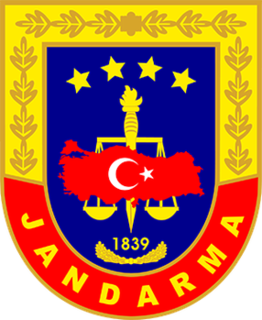
The Gendarmerie General Command is the national Gendarmerie force of the Republic of Turkey. It is a service branch of the Turkish Ministry of Interior responsible for the maintenance of the public order in areas that fall outside the jurisdiction of police forces, as well as assuring internal security along with carrying out other specific duties assigned to it by certain laws and regulations. In wartime, some of its elements can be subordinated to Turkish Land Forces by the President of Turkey.

The Turkish invasion of Cyprus began on 20 July 1974 and progressed in two phases over the following month. Taking place upon a background of intercommunal violence between Greek and Turkish Cypriots, and in response to a Greek junta-sponsored Cypriot coup d'état five days earlier, it led to the Turkish capture and occupation of the northern part of the island.
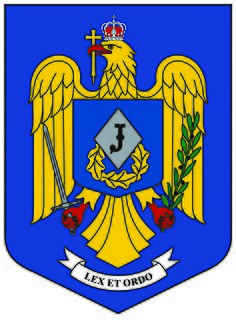
The Jandarmeria Română is the national Gendarmerie force of Romania, tasked with high-risk and specialized law enforcement duties. It is one of the two main police forces in Romania, both having jurisdiction over the civilian population.

Zaptié was the designation given to locally raised gendarmerie units in the Italian colonies of Tripolitania, Cyrenaica, Eritrea and Somaliland between 1889 and 1943.

The Assyrian Levies were the first Iraqi military force established by the British in British controlled Iraq. The Iraq Levies originated in a local Arab armed scout force raised during the First World War. After Iraq became a British Mandate, the force became composed mostly of Assyrians, Kurds and Iraqi Turkmen who lived in the north of the country, while the nascent Iraqi Army was recruited first from the Arabs who had joined the Iraqi Levies and later from the general Arab population (Beth-Kamala). Eventually the Levies enlisted mainly Assyrian soldiers with British officers. The unit initially defended the northern frontiers of the Province of Mosul when Turkey claimed the province and massed its army across the frontiers. After 1928 the prime role of the Levies was to guard the Royal Air Force bases located in Iraq.
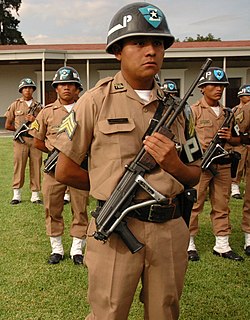
Provosts are military police (MP) whose duties are policing solely within the armed forces of a country, as opposed to gendarmerie duties in the civilian population. However, many countries use their gendarmerie for provost duties.

The Cyprus Police, is the National Police Service of the Republic of Cyprus and is under the Ministry of Justice and Public Order since 1993.

The Cyprus Police Academy is the main educational institution for law enforcement officers in Cyprus. It was founded in 1990 in succession to the Police Training School. It is recognised as a higher education institution by the Cyprus Council for the Recognition of Higher Education Qualifications (ΚΥ.Σ.Α.Τ.Σ.) and operates under the Ministry of Justice and Public Order as a police unit in the organisational structure of the Cyprus Police. It works on a permanent basis, both for the education of cadet constables and for the training of all police members irrelevant of their rank. Primary mission of the academy is to provide adequate education and training to all members of the service, so that they become competent to perform the diverse tasks of law enforcement.
The history of army policing in Great Britain dates back to the middle ages. However, the predecessor units to the modern Royal Military Police were only formed in the 1870s and 1880s, merging in 1926 and being granted their 'Royal' prefix in 1946.

The Gendarmerie of Haiti, also known as the Haitian Constabulary, was a collaborationist gendarmerie raised by the United States during its occupation of Haiti in the early 20th century. Established in late 1915, the gendarmerie was operational from 1916 until 1928, during which time it was Haiti's only military force, earning a reputation for active interference in civilian government that may have set the stage for the future politicization of Haiti's armed forces.
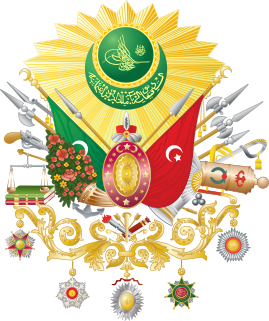
The Ottoman Army was the army of the Ottoman Empire after the country was reorganized along modern western European lines during the Tanzimat modernization period. It operated during the decline and dissolution of the empire, which roughly occurred between 1861 and 1918, the end of World War I for the Ottomans. The Crimean War was the first war effort in which the modern army took part, proving itself as a decent force. The last reorganization occurred during the Second Constitutional Era.
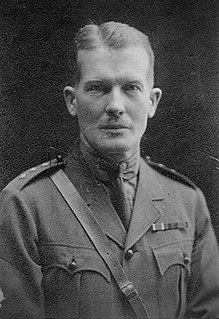
Lieutenant Colonel Albert Ernest Gallagher, CBE, DSO was a British Infantry and Colonial Military Police Officer of Irish descent, who fought in three wars and who became part of the ruling council of colonial Cyprus.



















